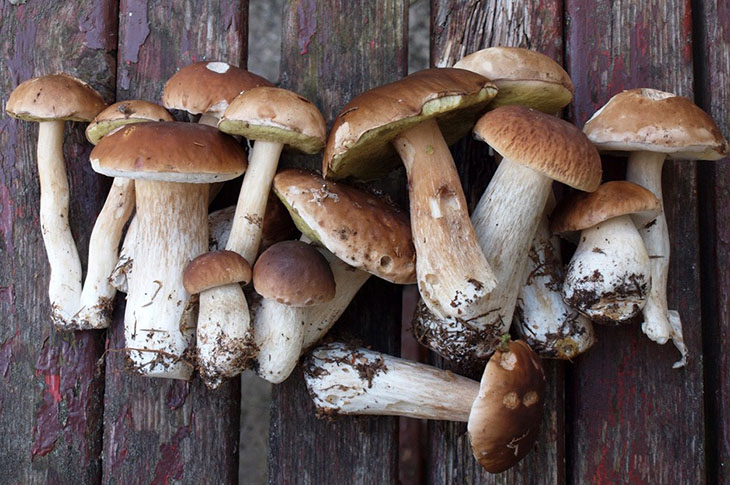
Autumn in Europe marks the arrival of the highly sought-after porcino mushroom, also known as Boletus edulis. These mushrooms hold a special place in Italian culinary traditions and are a favorite among recreational mushroom hunters in Italy and beyond. Beyond their culinary appeal, porcini mushrooms are rich in antioxidants and offer various health benefits, from combating Crohn’s disease to preeclampsia.
For centuries, porcini mushrooms have been harvested, but it’s only recently that scientists have recognized their significance. These mushrooms boast the second-highest concentration of a vital nutrient called ergothioneine, often abbreviated as ‘ERG’. This nutrient, which might be considered the 15th vitamin essential for human survival, cannot be produced within our bodies. Ergothioneine stands out as a unique compound, fulfilling the criteria of a vitamin, and our bodies have even evolved a specific transporter molecule for its absorption.
In the realm of vitamins, ergothioneine plays a crucial role. Since humans must primarily obtain vitamins from their diet, mushrooms serve as the primary whole food source of ergothioneine. While some bacteria and yeast can naturally synthesize ergothioneine, leading to its consumption when ingested, detailed scientific information on this process, including the bioavailability of yeast-derived ERG, achievable levels through consumption, and potential side effects, remains scarce.
A comprehensive review published in 2020 shed light on ergothioneine’s importance. Research indicates that deficiencies in ergothioneine have been associated with various health conditions in humans, including acute respiratory distress syndrome, cardiovascular disease (CVD), chronic obstructive pulmonary disease, pre-eclampsia, and certain types of leukemia.
“Brain and serum ERG levels are also markedly different in Parkinson’s disease… and even in sudden infant death syndrome, and ERG has been shown to be protective against β-amyloid-induced neuronal injury, and cytotoxicity,”the authors noted. They also said that 1-5 mushroom servings on a weekly basis in the diet can as much as cut your chances of a cognitive impairment by half.
The 15th Vitamin
The significance of ERG as a potential new vitamin hinges on the role of SLC22A4, also known as Solute carrier family 22, member 4. Initially identified as a transporter of carnitine, tetraethylammonium, and approximately 85% of pharmaceutical drugs targeting natural products within the body, SLC22A4 gained prominence in the story of ERG’s nutritional importance.
In a groundbreaking 2005 discovery, researchers found that SLC22A4 absorbed ergothioneine at rates 100 times higher than tetraethylammonium, leading to its designation as the ergothioneine transporter. This revelation raised intriguing questions: did vertebrate life evolve SLC22A4 specifically for fungal consumption and ergothioneine transportation, or was it adapted for ergothioneine transport after evolving for another purpose? Regardless, the presence of SLC22A4 in birds, fish, mammals, and certain reptiles indicates that life embraced ergothioneine as an antioxidant long ago.
Mushrooms, ERG’s primary source, feature prominently in WaL’s multipart series on functional medicine. These fungi contain a variety of active compounds, including triterpenes, polyphenols, and beta-glucan fiber, all boasting exceptional antioxidant and anti-inflammatory properties.
A 2020 review highlighted ERG’s ability to prevent or detoxify various common oxidants such as hydroxyl radicals, singlet oxygen, ozone, superoxide, peroxide, hypochlorite, and peroxynitrite. Mice deprived of their ergothioneine pathways due to genetic alterations faced significantly elevated risks of oxidative stress. Consequently, these mice were more susceptible to conditions like ischaemic stroke, erythroid differentiation issues, hearing loss, rheumatoid arthritis, lupus, Crohn’s disease, and type 1 diabetes, along with diabetic embryopathy.
This crucial role in combating oxidative stress has led many to consider ERG as the 15th vitamin. Its absence leads to rapid degradation in individuals, underlining its essential nature. Furthermore, research has indicated a notablecorrelation between ergothioneine consumption and increased longevity, further emphasizing the importance of this unique nutrient.
Mushrooms Good for Diet
The world of mushrooms is not just a realm of culinary delights but a frontier where food seamlessly blends with the realm of medicinal wonders. This intriguing crossover is often referred to as “functional food,” where certain edible items transcend their culinary purpose to offer potential health benefits. The question that arises is when does a food item cross the threshold from being merely nourishing to becoming a protective and fitness-promoting entity akin to medicine? This query is at the heart of contemporary scientific exploration, and oyster mushrooms, specifically the golden oyster variety, stand out as a notable example in this debate.=
Within the realm of mushrooms containing ergosterol (ERG), a compound with promising medicinal properties, the golden oyster mushroom reigns supreme. Imagine stumbling upon this ethereal fungus, flourishing on a rain-soaked log in a forest – it would undoubtedly resemble a magical healing herb. Scientific studies have revealed that certain cultivated golden oyster specimens contain a staggering 10 milligrams of ERG per gram of dry-weight mushroom, making them one of the richest natural sources of this compound.
“Many authors indicate that oyster mushrooms could be classified as functional food due to their positive effect on the human organism,” a review on the species stated and it concluded that among the various compounds, such as beta-glucans, terpenoids, and polyphenols, oyster mushrooms exhibit “immunostimulatory, anti-neoplastic, anti-diabetic, anti-atherosclerotic, anti-inflammatory, hepatoprotective and anti-oxidative properties.”
However, the golden oyster mushroom is not alone in this realm of natural healing. Porcini mushrooms, although predominantly found in the wild and not extensively cultivated, also boast significant ERG content. These mushrooms can contain up to 7.2 milligrams of ERG per gram, making them the second-highest known source of this compound among measured mushrooms.
This fascinating exploration into the ERG content of mushrooms raises important questions about the boundaries between food and medicine. As scientists delve deeper into understanding the medicinal potential of various edible items, mushrooms like the golden oyster and porcini emerge as potent examples of nature’s ability to blur these lines. In the contemporary age, where scientific inquiry is shedding light on the therapeutic properties of everyday foods, these mushrooms serve as intriguing subjects of study, guiding us toward a better comprehension of the intricate relationship between nutrition and health.



